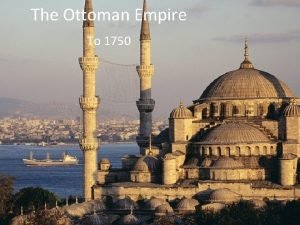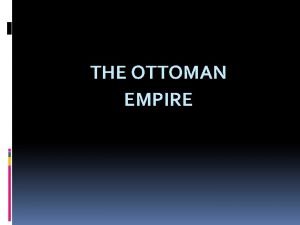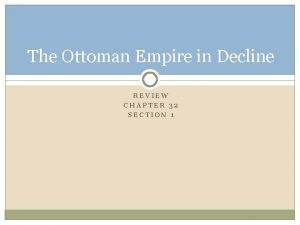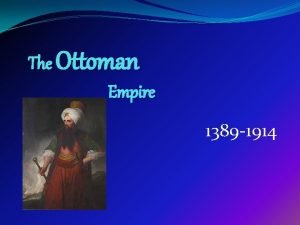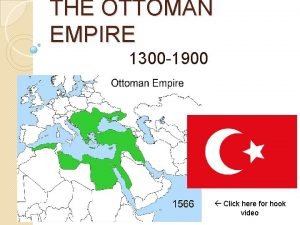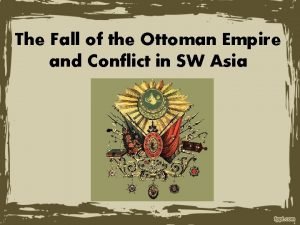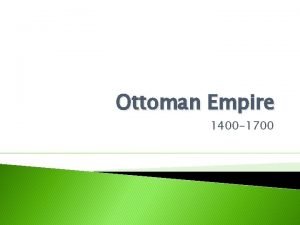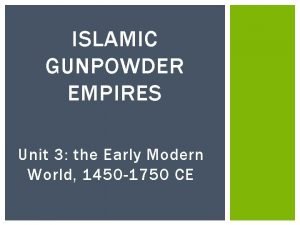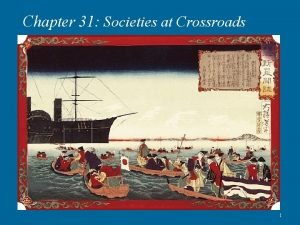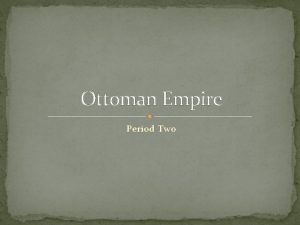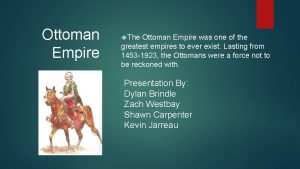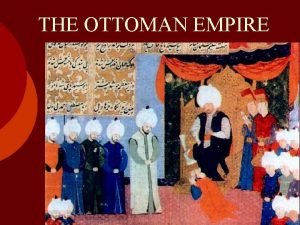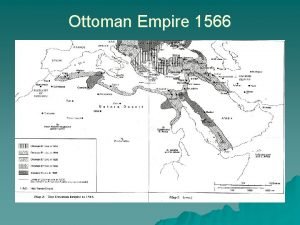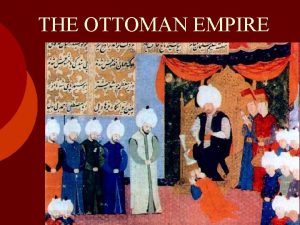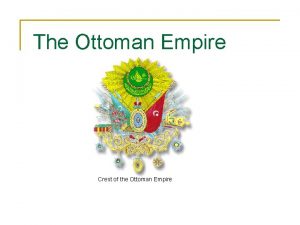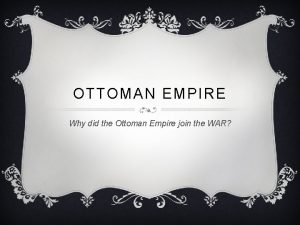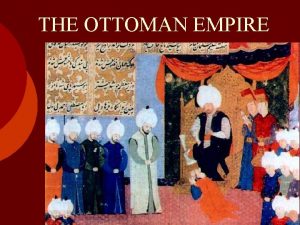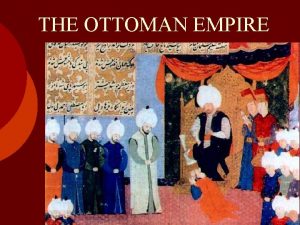Ottoman Empire Period One Ottoman Empire The Ottoman














- Slides: 14

Ottoman Empire Period One

Ottoman Empire The Ottoman Empire also historically referred to as Turkey or the Turkish Empire, was a contiguous transcontinental empire founded by Turkish tribes under Osman Bey in northwestern Anatolia in 1299. The Ottoman state was transformed into an empire. During the 16 th and 17 th centuries, the Ottoman Empire was one of the most powerful states in the world controlling much of Southeast Europe, Western Asia and North Africa.

Territory Covered Ottoman Empire

OTTOMAN EMPIRE Territory Covered • Origins of the Ottomans=different parts of Anatolia • 1520: conquered Belgrade, Rhodes, most of Hungary, and most of Middle East as far as Algeria • 1639: all of Mesopotamia (including Baghdad) was granted to them • 1774: gave part of the Yedisan region to Russia • 1830: Greece became fully independent and sovereign • 1862: Moldovia and Wallachia formally united to form Romania • 1923: Treaty of Lausanne led to sovereignty of Republic of Turkey as the successor state of the Ottoman Empire

OTTOMAN EMPIRE Territory Map

Leaders and Political Structure Ottoman Empire

Noteworthy Leaders • 36 Sultans total • First Sultan was Osman I Khan • Suleiman the Magnificent • 10 th & longest-reighning • 1520 -1566 • Made the Ottoman Empire one of the most powerful states in the world

Political Structure • Absolute monarchy • Sultan is leader over everything • Political, military, judicial, social and religious capacities

Cultural Contributions Ottoman Empire

Ottoman Empire (1299 -1923) • Religion: Most population was Muslim while the other half were Christian under the rule of a Muslim minority. • Accomplishments: Trough their constant academic pursuit of knowledge they brought technological, medicinal and social wonders never before seen to the world and were highly civilized at a time of widespread barbarism.

Art & Architecture A lady from the Ottoman court playing the Def at the Harem Üç ( ' e u osq M d e ad II i r n u o c M l ee Ba ) built by minarit r h T ' The sque alconied o M i l ilt. b Serefe e. It's three n it was bu n he at Edi highest w e was th The S ule mosqu ymaniye, S ul e Roxel and tomb, a tan Suleima en lo n' years. a, started in ng with his s imperial 15 w in Hagia which Sina 50 and com ife, pl n S height ophia. The p sought to su eted in six rp ri o Sinan f 174 feet an ncipal dome ass the ha d r corner d his own t is 86 feet in ises to a omb b. uilt ou diameter. tside i ts nort h

Empire Rise and Fall Ottoman Empire

Rise of the Ottoman Empire (1299 -1453) • Founded by Osman I. • Sultan Mehmed II conquered Istanbul – 1453 • This caused the state to grow into a mighty Empire. • Reached its peak under Suleiman the Magnificent in the 16 th century.

Fall of the Ottoman Empire (1683 -1923) • Began a slow decline after a defeat at the Battle of Vienna – 1683 • Adding to the defeat were the Allies in World War I • Empire fell after if was dismantled by the Allies after the end of the war - 1918
 One empire one god one emperor
One empire one god one emperor One god one empire one emperor
One god one empire one emperor Ottoman empire 1750
Ottoman empire 1750 The ottoman empire grew and expanded after it conquered the
The ottoman empire grew and expanded after it conquered the Map of ottoman empire 1800
Map of ottoman empire 1800 Was the ottoman empire tolerant of other religions
Was the ottoman empire tolerant of other religions Ottoman empire gunpowder
Ottoman empire gunpowder Ottoman empire at its height
Ottoman empire at its height Fall of the ottoman empire effects
Fall of the ottoman empire effects Ottoman empire 1400
Ottoman empire 1400 Ottoman safavid and mughal empire map
Ottoman safavid and mughal empire map Devshirme system
Devshirme system Ottoman safavid and mughal empire map
Ottoman safavid and mughal empire map Map of ottoman empire 1800
Map of ottoman empire 1800 Khanate of jagadai
Khanate of jagadai


